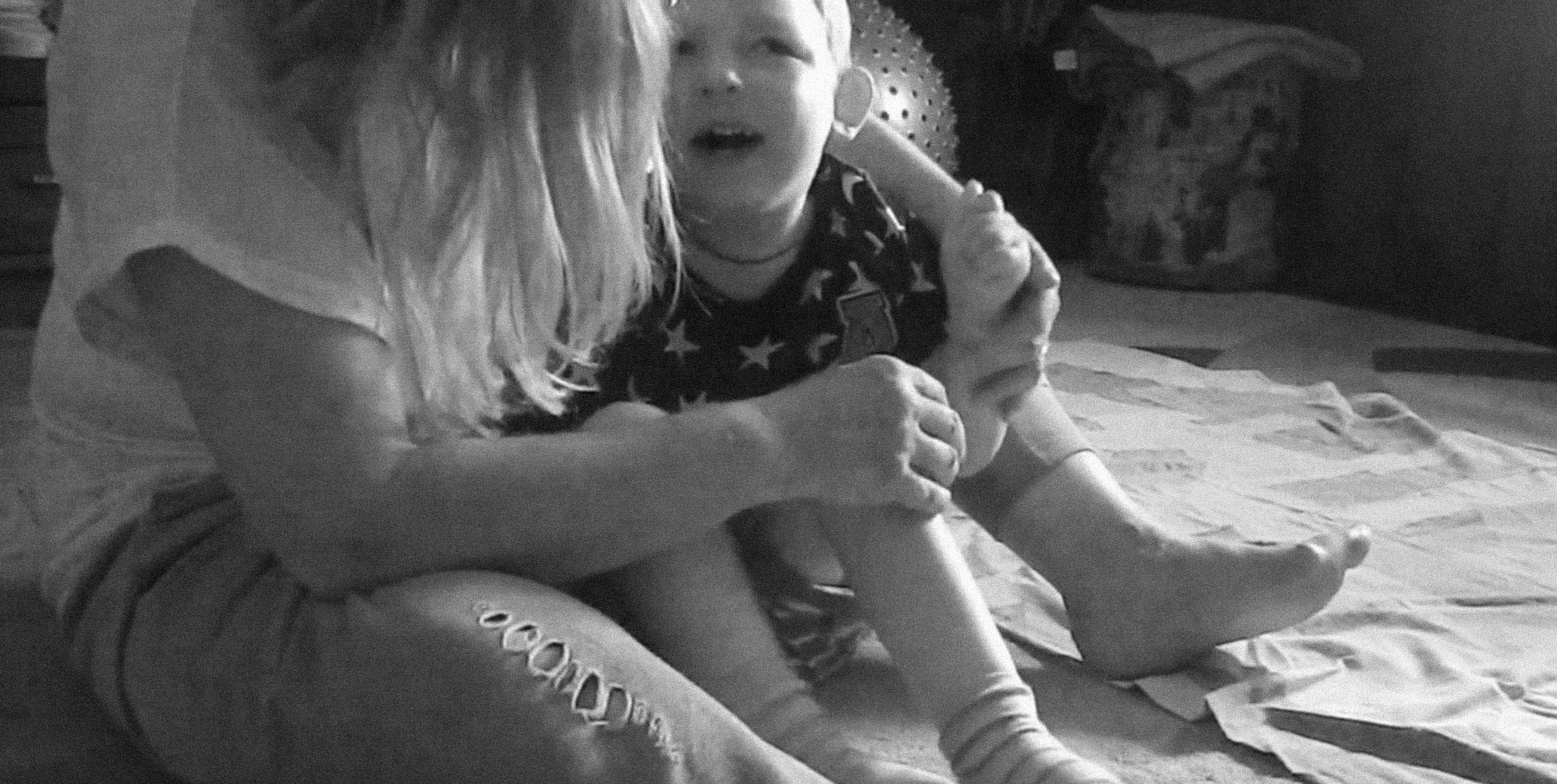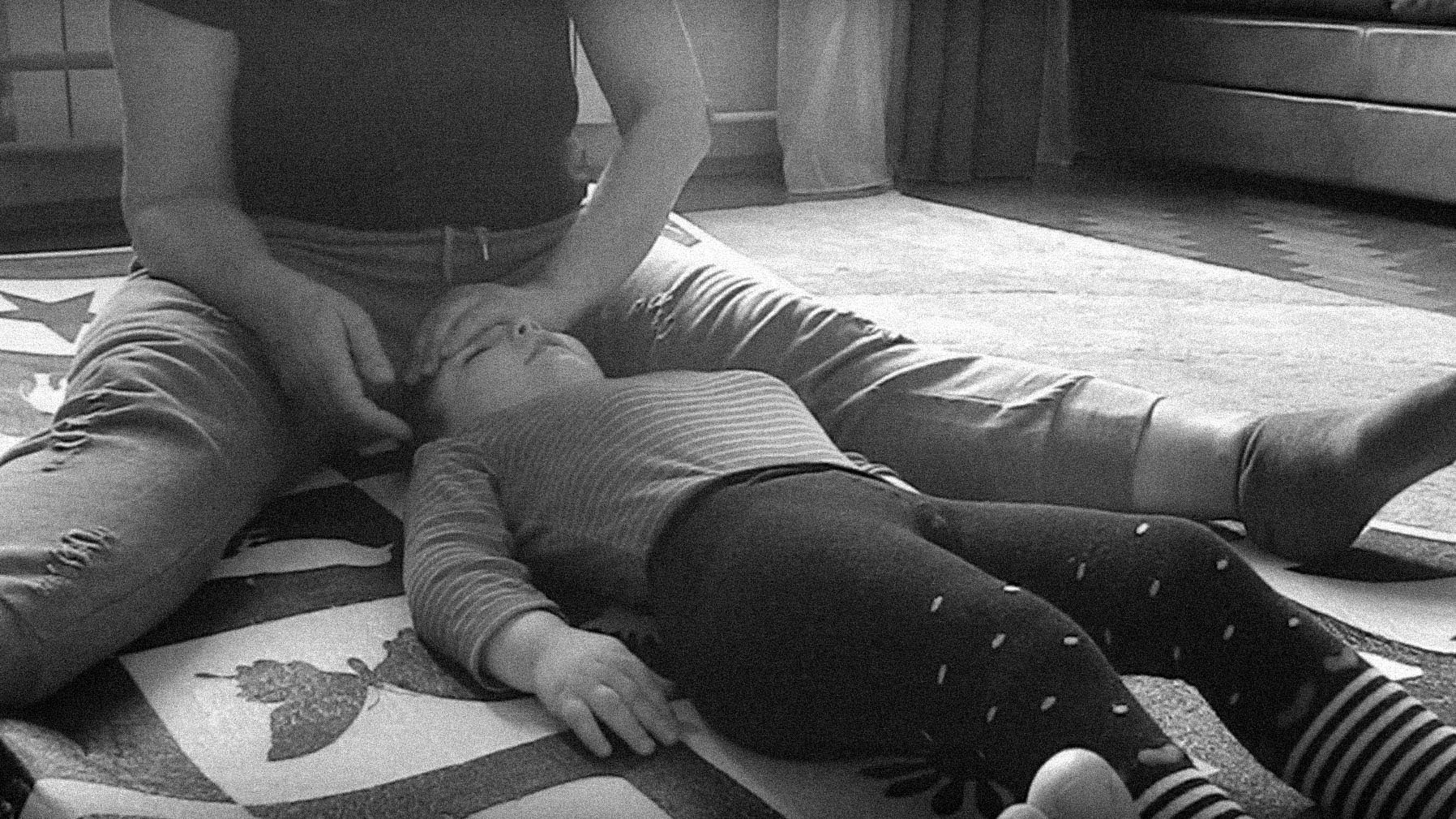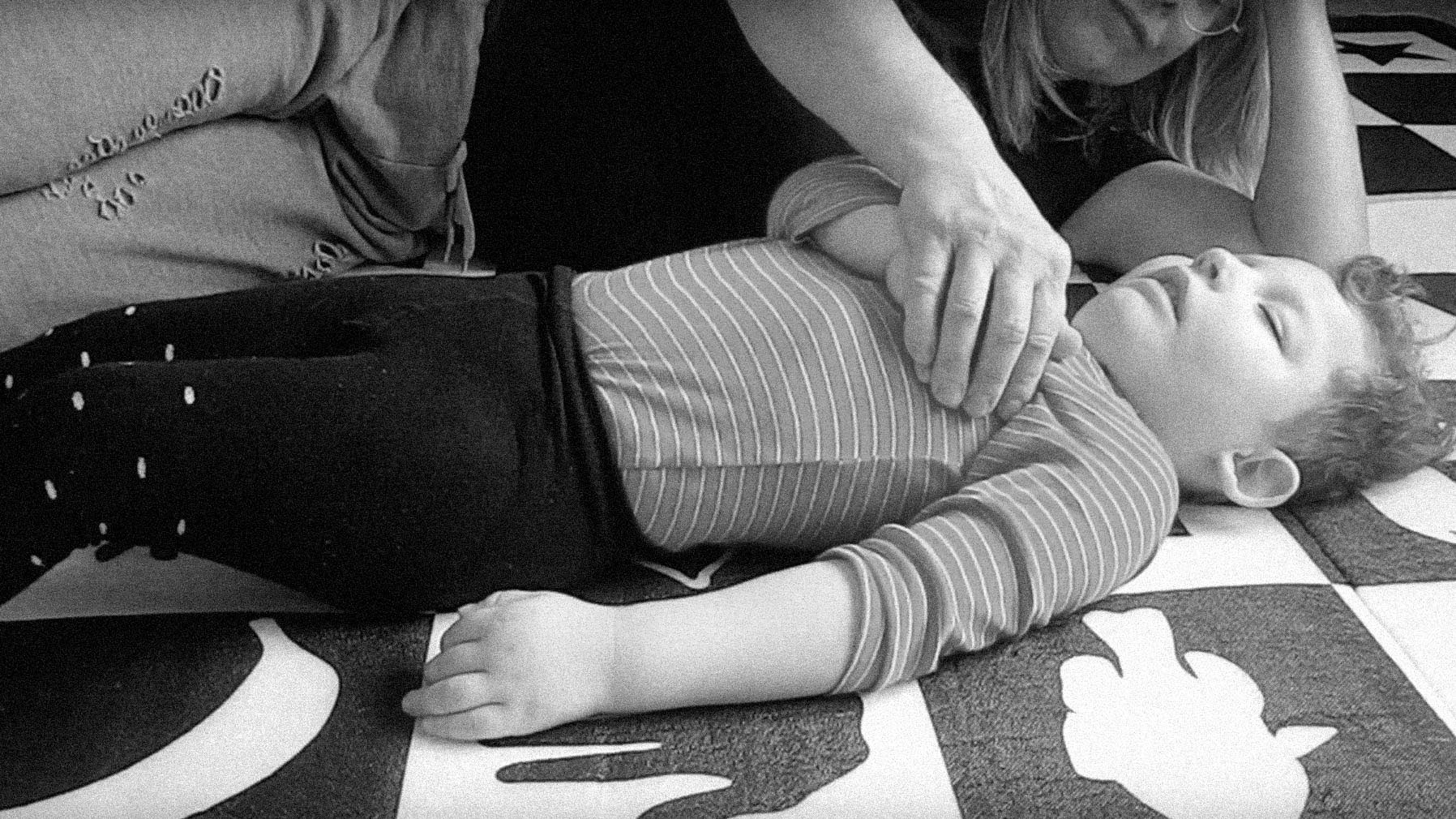Historia

Timka
Little warrior. Even with the beauty of a lion. When we first had lessons, I thought that there was a lot of similarity between Timka and Seva. Non-integrated letter C. Head tilted back and spine curved into the letter C. Typical position for newborns. I saw Timka, as before I saw Seva trying to move his head by lifting and moving the pelvis, which blocked it further. With each attempt, the spasticity increased, the lockjaw increased and the number of involuntary movements increased, and the image of oneself, the faith in his own efficiency decreased. . It all made Timka continue to complain…
Wailing, weeping accompanied him practically all the time. Together with Timka we wrote lessons for him – we used both of the lessons created by Seva. In some way, Seva indirectly became a teacher of Timka. I remember how Seva taught me functional anatomy of his body, we discovered what was possible for him, and what was not, which brought relief and relax, and what caused hyperkinesis. Maybe for the first time I thought to create a situation in which children would teach other children. Where there shared their experience. And where it was not limited to space and time. But then I could only dream about it. Timka learned quickly. When he blocked his head, he tried to put his finger to his mouth and move his tongue to unlock his head. Sometimes it worked, and sometimes it ended with a lockjaw.
Once, he took out his finger too late and bit a piece of it. Happily, his dad was close. From lesson to lesson, he was more and more calm. More and more times he did not have to struggle against his body, he could only enjoy it … he could contemplate it. To recognize movement dependencies, recognize the emotions that appear when one plays with movement .. learned how it is to be Timka. That’s what development is all about. So all children learn themselves. If they do not have to spend time on involuntary movements and fighting with spasticity. But self-pity and self- indulgence did not pass away. It had to help him, otherwise he would not waste energy on that. He is too wise to do that. That changed after Alan’s lessons. Timka and Alan had some lessons – they were looking for a move that was good for Timka. These were very monochrome, simple lessons.
One movement consistently, more and more deepened. With an absolute subordination of its range and tempo of readiness to Timka. With full listening to his needs. During these lessons Timka fell silent. Maybe he did not want to distract his mindfulness … so as not to reveal anything he learned about himself. Why he stopped and did not return – that knows only Timka. He may tell us about it sometime. Timka is trying hard to transform his wheeping in speech. He does it with his own grace.
Alan about Timka:
Alan Questel
I came to Poland to teach a workshop in the Feldenkrais Method for children with challenges and their parents. The plan was to work with 2 children, each a couple of times in the workshop, as a demonstration of how the method could be applied. I wanted to meet both children before the workshop both to see them and also to begin to develop some rapport with them.
I met Tamerlan, a sweet child who presented much as I expected. And then I met Timka who cried, no, more like screamed as he moved into extreme extension for the entire time I spent with him. I was told he spent most of his time in this state and I thought, he will be a challenge to work with for only 2 times.
The first time Timka was brought to the workshop he was asleep. A bit of a relief for me. He had some degree of hemiplegia and I spent much of the time bringing his affected hand to his mouth looking to form some connection between his hand and his mouth, since both occupy such large representation in the sensory and motor cortex, with the hope that this would lead to more use of his hand and arm. He slept for the entire lesson and even though he was asleep he felt quite responsive to what I was doing. I was told that that night he slept longer than usual.
When he was brought in for his second ‘lesson’ (in the Feldenkrais Method our sessions are called lessons as the entire process is based on learning rather than a diagnostic model) he was wide awake…and screaming. Initially I left him in his mother’s arms as I explored touching him. But it didn’t seem to make much difference so I took him in my arms and began to support him in his movements of extension, helping him extend and looking for moments where he might be able flex, fold a little bit. The entire time he cried/screamed. This went on for quite a long time until eventually I was able to hold him more closely to me. At this point, while still moving with his patterns of movement, I simply held him and listened to his breathing as I matched my breathing with his, with the intention of quieting his breathing, which I assumed was affecting his movement.
Honestly, I wondered what the 45 people watching this were thinking and how they were tolerating his screaming for such a long time. I had something to do…they were just watching and waiting. And finally, maybe 40-45 minutes into his lesson he stopped screaming. He was still at the edge of it and I had to really work with my breathing and his to keep him from starting again. We went back and forth like this for some time. Eventually I could hold him in a sitting position and slowly bring his hand to the floor. I was looking to give him a feeling of how he could support himself with some sense of his own skeleton providing the support. I gently explored this with both of his hands and for the most part he was quiet. And then it was time to stop.
When I passed him back to his mother and looked around the room to answer questions I realized the very deep state I had entered into in order to be with him so fully. Initially talking, being in language rather than this deep sensory experience, was difficult for me. To my surprise the people watching were completely engaged with what had been happening. Watching a Feldenkrais Lesson often isn’t the most captivating thing. There is a lot of waiting with the appearance of not much happening and lot of patience…a lot!
Some weeks after his lessons Ewa (who is doing wonderful work with children and who brought me there to teach) told me they now referred to Timka as Timka before Alan and Timka after Alan. I didn’t understand this distinction and asked her to explain it to me. I was told that Timka had transformed, was laughing, engaging with people, a completely different person.
To be honest I was surprised. I thought here is a child who will need many, many lessons. And of course, everyone wanted to know ‘what did you do?’ And I had no answer. I could describe ‘what’ I did as I have done here to some degree. But I had no idea that this would be the outcome. And ‘what’ I did, while it is something I might do with many children, it is not a predictor of what will happen in the lesson.
The Feldenkrais Method is an approach, not a technique. One where we work with the individual. What works with one child may not work with another. It is a mutual path of discovery that is mostly determined by the child and his or her responses.
As I think back on that second lesson with Timka the things that stand out the most to me was my patience with him with no intention of getting him to do something. A kind of ‘being with him’ that allowed him to find me. And then together something formed from that.
What I did wasn’t magic. I had intentions throughout and throughout I kept finding out what was possible. Training in the Feldenkrais Method is a lot about ‘not knowing’ and learning to tolerate that while having intentions way, way, way in the background. It is something that can be learned and practiced.
Timka responded and continues to respond and develop. Like a switch that got turned on that provided him and his nervous system with enough information for him to continue on his own. Something that is possible for everyone!

